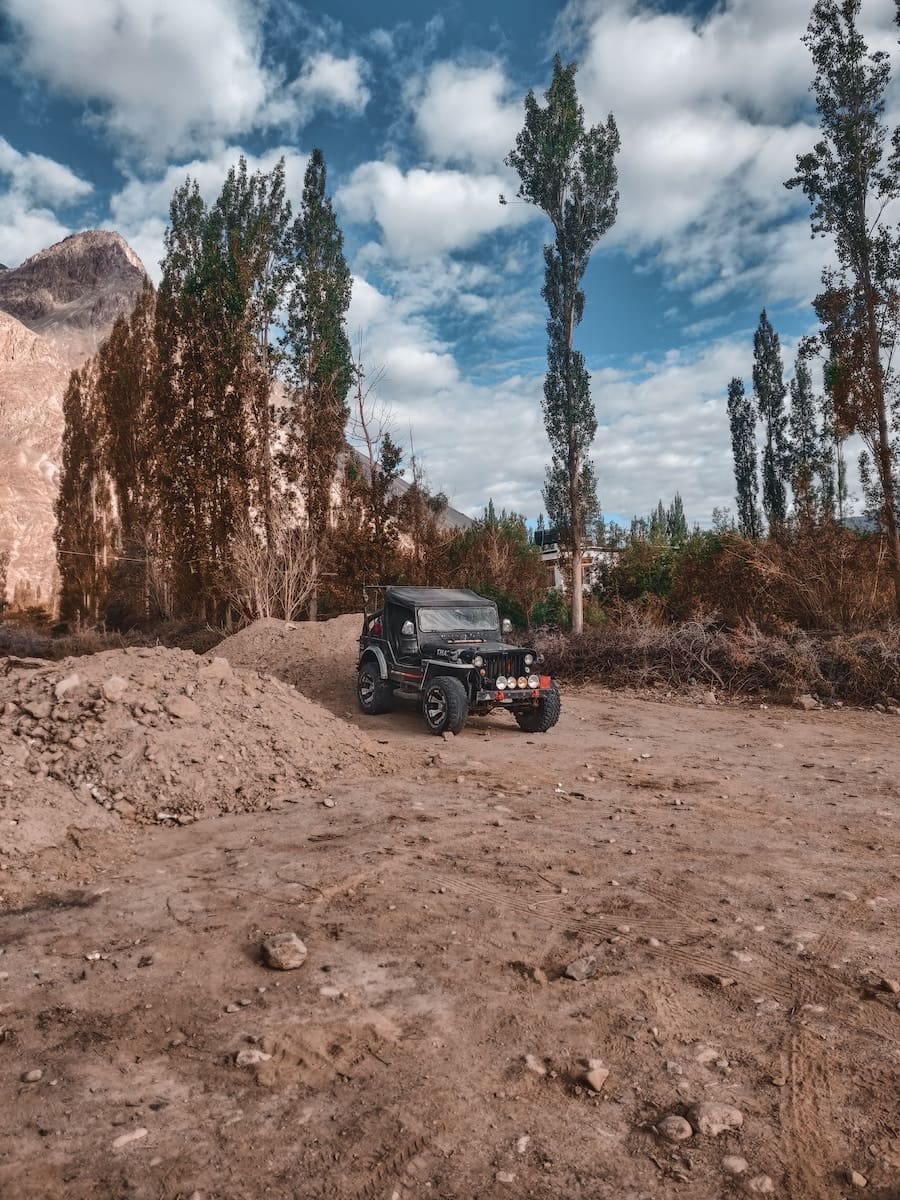Benz patent motor Vegan was the first modern car with lots of features like a solid rubber tire, headlights, steel spoked wheels, and a rear-mounted engine.
Cars manufactured at this age have more complex and latest technologies to make the car more economical and easy to use, for example, adaptive cruise control, four-wheel drive, all-wheel drive, etc.
Most people got confused between four-wheel drive and all-wheel drive. Both of these features are provided for better traction of tiers.
Both these systems help the driver decide whether he wants to divide the torque between the tires to avoid slippage to the tires.
Key Takeaways
- All-wheel drive (AWD) systems automatically distribute power to all wheels as needed, ensuring optimal traction.
- Four-wheel drive (4WD) systems allow drivers to engage power to all wheels for better off-road performance manually.
- AWD is better suited for on-road conditions, while 4WD is designed for more rugged terrain.
All-Wheel Drive vs Four-Wheel Drive
AWD systems are designed to provide power to all four wheels all the time, whereas 4WD systems provide power only to two wheels until additional traction is needed, at which point the other two wheels share point power. AWD systems are designed for on-road use in all weather conditions.

An All-Wheel Drive system is a modern technology that transfers torque to the wheels that require more traction to avoid the sliding effect in tiers. It is for all-weather use and is on all the time.
It can run on any road condition, whether the road is wet or slippery, icy, or a road with dirt.
A Four-Wheel Drive system is a part-time system that needs to be activated when required or in an emergency, either by pushing a button or pulling a lever. It allows all Four-wheel of the vehicle to spin concurrently or simultaneously.
In this system, a transfer case is placed between the front and the rear axles.
Comparison Table
| Parameters of Comparison | All-Wheel Drive | Four-Wheel Drive |
|---|---|---|
| Definition | All-Wheel Drive is referred to a system in which all four wheels of a vehicle are always connected to one source of power. and can rotate at a different speed. | It is a system that transmits the power in a fixed amount to all the wheels of a vehicle continuously. |
| When to use | It is for all time usage and suitable for all roads conditions whether rough or muddy. | It is not meant to be used all the time and used for off-roading and rugged terrain. |
| Activation method | All-Wheel Drive is active all the time and there is no need for its manual activation. | Four-Wheel Drive is activated either by pressing a knob or dragging a lever. |
| Maintenance cost | AWD is very expensive and requires high maintenance services. | Four-Wheel Drive is less expensive and easy to maintain. |
| Example | Examples include Dacia Duster, Fiat Sedici, and Nissan Qashqai, etc. | Examples include Subaru Crosstrek, Toyota Landcruiser and Mercedes Benz class, etc. |
What is All-Wheel Drive?
All-Wheel Drive is mostly used in small four wheels drives and is active all the time. An advanced computerized system controls it and is fuel-efficient as it adapts according to road conditions.
For example, on a dirt road, the system will evenly distribute the torque to all four wheels. While on a normal road, the system sends most of the torque to the rear wheels only.
There are mainly two types of All-Wheel Drive systems: part-time AWD and full-time AWD.
The part-time all-wheel-drive system is for normal road conditions in which only a real axle is driven, and it does not include a central differential, whereas the full-time all-wheel-drive system is for permanent use and it includes a center differential that can be locked in slippery conditions.
The biggest benefit of the all-wheel-drive system is its remarkable grip system and better weight distribution, which provide more constant handling.

What is Four-Wheel Drive?
The Four-Wheel drive system uses a differential to distribute power to all four wheels of a car. In high traction driving, power is only required to the rear wheels, and there is no need to engage four-wheel drive, but in a connection where the traction is low, the differential can be adjusted, and the wheels with more traction will get maximum power.
Four-wheel drive helps gain adhesion in difficult driving conditions such as ice and rocks, making vehicle control difficult. By employing both wheels, traction, and control improve or improve.
FWD is ideal for rough roads and is thus used in heavy vehicles.
Four-Wheel Drive also has some drawbacks, such as its added costs for purchase and maintenance. Added weight due to which the braking distance needed to make a complete stop increases and the fuel efficiency decreases.

Main Differences Between All-Wheel Drive and Four-Wheel Drive
- All-Wheel Drive is referred to a system in which all four wheels of a vehicle are always connected to the source of power and can rotate at different speeds. On the other hand, Four-Wheel Drive is a system that transmits the power in a fixed amount to all the wheels of a vehicle continuously.
- Four-Wheel Drive is less expensive, easy to maintain, and can be handled by anyone. While All-Wheel Drive is very expensive and requires high maintenance services.
- Four-Wheel Drive examples include Subaru Crosstrek, Toyota Landcruiser, and Mercedes Benz class etc. In contrast, All-Wheel Drive examples include Dacia Duster, Fiat Sedici, and Nissan Qashqai.
- Four-Wheel Drive is not meant to be used all the time and is used for off-roading and rugged terrain. In contrast, All-Wheel Drive is for all-time usage and suitable for all road conditions, whether rough or muddy.
- All-Wheel Drive is active all the time, and there is no need for its manual activation. Four-Wheel Drive is activated by pressing a knob or dragging a lever.

- https://ieeexplore.ieee.org/abstract/document/1200259/
- https://ieeexplore.ieee.org/abstract/document/4357384/

This discussion doesn’t address the environmental impact of AWD and 4WD systems. It feels incomplete.
It’s true. Environmental sustainability is an important aspect to consider.
I find the comparison table very helpful. It makes it easier to weigh the pros and cons of each system.
Does anyone feel like these systems could be used more effectively by manufacturers?
The information provided is overly technical. It could have been more digestible for the general reader.
The post has an extensive amount of information, but it’s very well-sourced.
Well explained. I now have a clear understanding of the difference between all-wheel drive and four-wheel drive.
Yes, I agree, very informative and enlightening post.